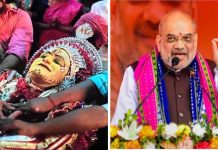
The home minister India on Monday proposed that Jammu and Kashmir should be made a Union Territory with a legislature. Along with it the government also said that Ladakh will also be a ‘UT’ but with no legislature. Article 370 which grants special autonomous status to Jammu and Kashmir is been proposed to scrap it off. The move comes in amid section 144 imposed in the Jammu and Kashmir. However, the proposal witnessed a lot of protest from Kashmiri leaders, most of who protested that the decision will have disastrous consequences.
Jammu and Kashmir which will be directly controlled by the central government will have no separate legislative assembly or a government of its own. It is the President of India who will appoint an administrator or lieutenant-governor for UTs. Ladhak on another side will also be a Union Territory but with no legislature.

Difference between State and a Union Territory
- A state has its own elected government but a Union Territory is an administrative unit controlled and regulated by the Central Government. In simple terms, the governance in UT is administrated by Lieutenant governor appointed by the central government while a state operates as per the elected members of the state’s Legislative Assembly.
- A state will have its own Legislative Assembly and can also form its own laws by its elected MLAs. However, there is a provision that allows the setting up of a Legislative Assembly in a Union Territory. Now Kashmir which is going to be a UT with legislative, it will be just as is the case with Delhi and Puducherry
- The rest of the Union Territories: Andaman and Nicobar Islands, Chandigarh, Dadra, and Nagar Haveli, Daman and Diu and Lakshadweep and newly added Ladakh, are without legislatures. That means the UT will not have any legislative assembly.
- The powers in a state are distributed between the state and the union, while in a Union Territory, all powers are vested in the hands of the Union. States also have a federal model of relationship with the Union Government, unlike the Union Territories.

For now, there are 29 states and 7 Union Territories in the country. Therefore, after this division, there will be 28 states and 9 Union Territories in the country.
Division of UT as per with and without Legislative
Union territories without their legislatures:
• Andaman and Nicobar Islands
• Chandigarh
• Dadra and Nagar Haveli
• Daman and Diu
• Lakshadweep
• Ladakh
Union territories with their legislatures:
• National Capital Territory of Delhi
• Jammu and Kashmir
• Puducherry


































